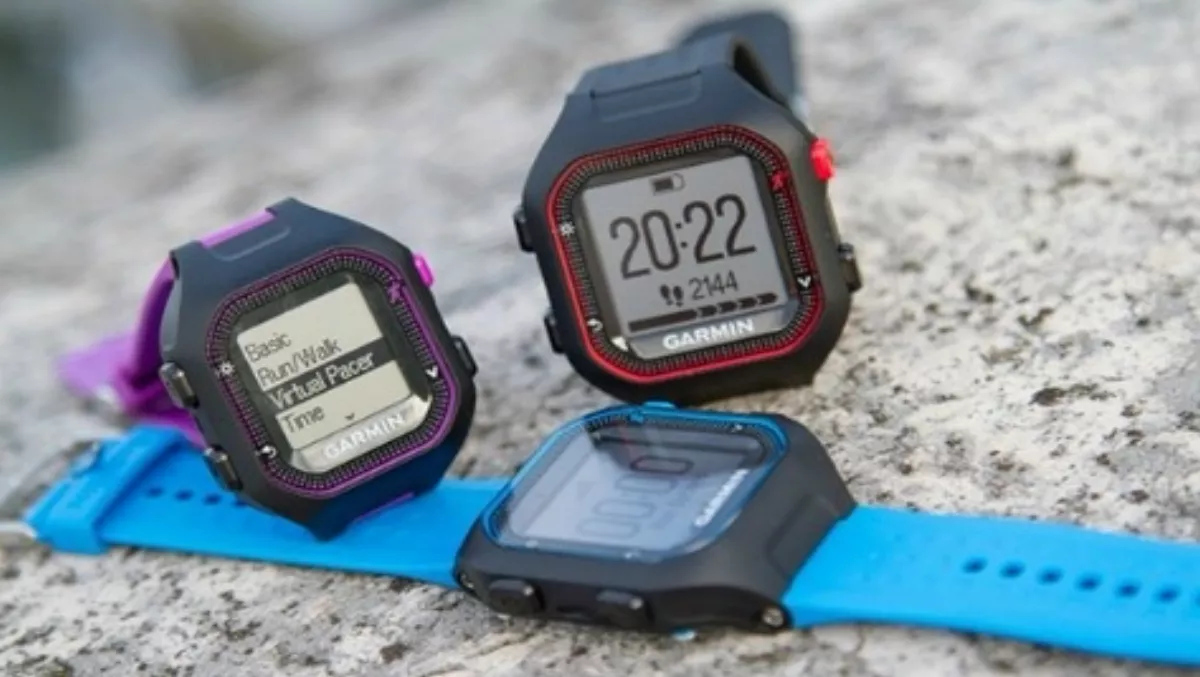
Hands-on review: Garmin's Forerunner 25
Nowadays it is almost impossible to go without reading about yet another smart watch or wearable gizmo. PCs sales are tanking and smartphone hype is gradually running out of gas, and meanwhile, wearables continue generating a growing amount of excitement.
This hasn't escaped the folks at Garmin, who've built up a loyal fan base with their earlier Forerunner 15 running watch - a device which offers GPS tracking as well as activity tracking for steps and calories.
Their new smart watch brings several nifty features to the table, all of which are designed to appeal to runners and fitness fanatics.
Look and feel
While smart watch makers are going out of their way to hue elegant timepieces out of increasingly exotic alloys, the Forerunner 25 has more in common with a retro digital watch from the 80's.
This isn't necessarily a bad thing. For a start, the Forerunner 25 is built like a brick you-know-what house. Its black plastic body will take knocks and bumps at the gym or on the track that'd leave most other smart watches damaged and spending quality time at the repair shop.
Compared to the Forerunner 15, the Forerunner 25 is less of a chunky monkey - it's thinner and also sports a larger display. This handily means it is comfy to wear with long sleeves but is also readable while on the go.
There are also two different versions available, a large and small, designed for different sized wrists but both packing the same functionality.
Bells and whistles
This simple yet rugged design of the Forerunner 25 also means it sports a plain-Jane mono LCD display. Fancy pants touchy-feely hi-res OLED or LCD displays offer no real benefits when you're out running, and worse still, they hammer battery life. The Forerunner 25's display also remains perfectly readable under direct sunlight.
As with old school digital watches, everything is accessed by four buttons - two on each side of the Foreunner 25. It's a simple affair that's far less fiddly than trying to drive a touch screen with sweaty hands in the middle of a run or workout - even if it took me several goes and more than a little RTFM (reading the flipping manual) to figure out what each button did.
The Forerunner 25 can paired over Bluetooth with iOS or Android smartphones. This handily means that it can alert you to incoming calls, text messages, emails and calendar events.
Alerts are pretty basic and aren't as detailed as those on a Pebble, Apple watch or Android Wear device, plus you don't get notifications from third party apps such as Facebook and Twitter.
Although this turned out to be a good thing. I've lost count of the amount of times I've had my thought process completely derailed by a smart watch vibrating to tell me that some chump had posted a cat video on Facebook. With the Forerunner 25 this lack of sophistication in the notifications department acts as a notification spam filter that worked a treat.
For me, a good workout involves lifting pints into my mouth or tearing open potato chip bags. Workout information is synched to an app called 'Garmin Connect' which provides detailed analysis of your fitness activities whilst wearing the Forerunner.
The app also brings other features to the fore, including the ability to share workout data in real-time with teammates, friends and coaches using the apps Live Tracking feature. Sadly Garmin Connect doesn't track pint lifts or chip packet opens. Oh well, maybe in their next release.
In use
While the forerunner may sound basic compared to the wrist mounted super computers many people are rocking, it's a sensible design given its purpose.
This also confers the Forerunner 25 with some distinct advantages over most other smart watches. For a start, the forerunner can handle going for a swim and is water-resistant for up to 50 metres.
Another area where the forerunner stands out is battery life. Where Android wear and iOS watches will curl up their toes and demand charger time after a day and a bit, the Forerunners battery lasts at least three weeks with GPS disabled. That's pretty impressive considering you'd charge an Android wear device 12-15 times over the same time period.
If that's the good, then what about the not-so good? Where heart rate monitors are pretty much a given with most smart watches, the Forerunner has no built-in heart-rate sensor. It also doesn't support Bluetooth chest straps. It does, however, support Garmin's ANT+ chest straps, so not all is lost if ticker tracking is a big part of your fitness regime.
Verdict
If you are big into working out - particularly running, the Forerunner 25 is a great choice. It is a basic yet solid watch that includes nearly every form of workout tracking a running fanatic is likely to ever need plus smartphone notifications.
It's built for purpose design translates into great battery life as well as durability. These combine with a very reasonable $240 sticker price, and make the Forerunner 25 a solid performer.

